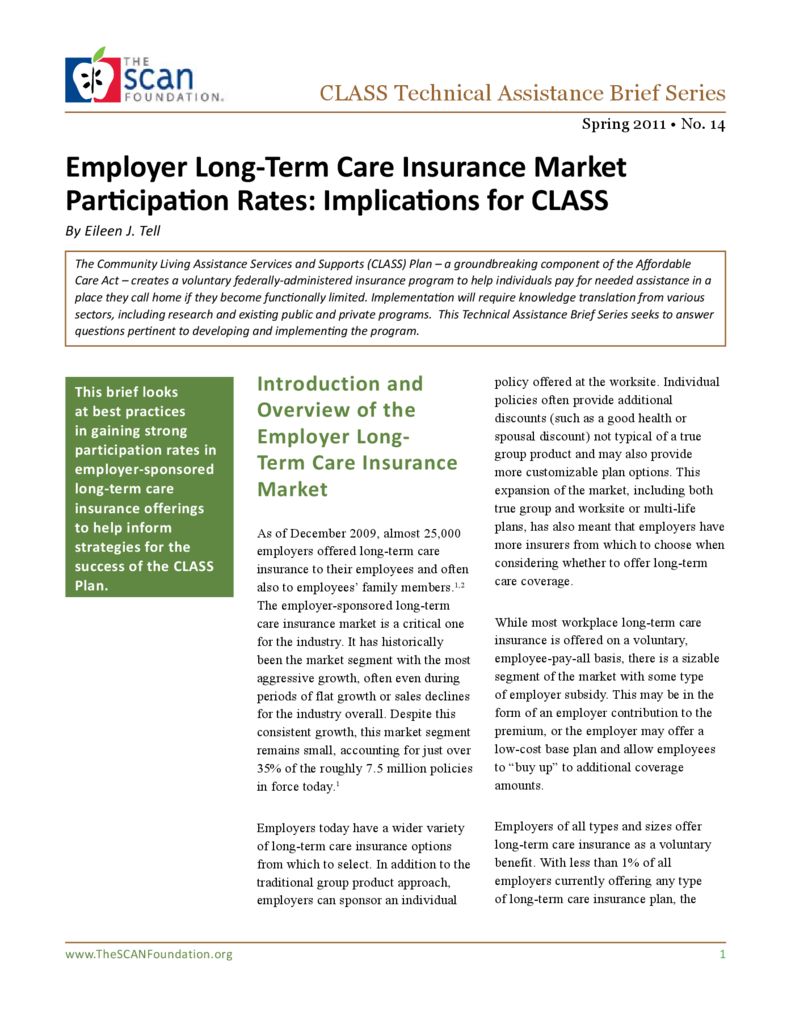Employer Long-Term Care Insurance Market Participation Rates: Implications for CLASS
summary
This policy brief looks at best practices in gaining strong participation rates in employer-sponsored, long-term care insurance offerings to help inform strategies for the success of the CLASS Plan.
Date Updated: 04/06/2011As of December 2009, almost 25,000 employers offered long-term care insurance to their employees and often also to employees’ family members.1,2 The employer-sponsored long-term care insurance market is a critical one for the industry. It has historically been the market segment with the most aggressive growth, often even during periods of flat growth or sales declines for the industry overall. Despite this consistent growth, this market segment remains small, accounting for just over 35 percent of the roughly 7.5 million policies in force today…
Download the publication for all visuals and complete references.
Continue Reading
This policy brief provides an introduction to The SCAN Foundation’s CLASS Technical Assistance Brief Series, which explores many of the critical issues to be considered for successfully implementing CLASS.
This policy brief describes the broad needs of individuals with disability and the wide range of supportive and environmental solutions that can allow for the most independent living possible. It suggests how findings on social and environmental supports for individuals with disability can inform implementation of CLASS.
This policy brief provides background on the historical development of benefit eligibility triggers in the private long-term care insurance market. Understanding how these triggers came into being can provide important information to those charged with implementing the CLASS Plan.


